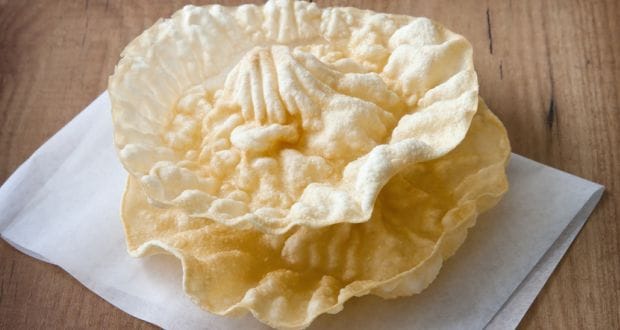Once upon a time, every Indian household had a charpoy full of papads drying in the sun. However, with changing lifestyles, the art of making papads at home is fading, and store-bought versions have taken over. Despite this, papads remain a beloved crunchy accompaniment that can elevate a simple meal or serve as a quick snack. Each region in India has its own variety - South Indian rice papads, Rajasthan's gram flour (besan) papads, or the Punjabi urad dal papads. Today, innovative flavours such as yam, tapioca, and jackfruit are also emerging. Roasted papads topped with tomato, onion, and chaat masala are a popular cocktail snack, and papads have even found their way into cooked dishes like papad ki sabzi.
But while papads may seem like a low-calorie, guilt-free indulgence, their actual health profile tells a different story.

Nutritional Profile:
- A single papad (approximately 13 grams) contains:
- Calories: 35-40 kcal
- Protein: 3.3 g
- Fat: 0.42 g
- Carbohydrates: 7.8 g
- Sodium: 226 mg
While consuming one to two pieces in moderation is acceptable, papads should not replace whole grains in daily meals. Two papads provide almost the same calories as one chapati, making them a poor substitute.
Also Read: 6 Most Unhealthy Indian Street Foods You Must Avoid
Here Are 3 Hidden Health Risks of Eating Papad:
1. High Sodium Content

Factory-made papads often contain high amounts of salt and sodium-based preservatives, such as sodium carbonate and sodium bicarbonate (commonly referred to as papad khar). Excess sodium intake is associated with high blood pressure, kidney disorders, and heart disease. Studies confirm that processed foods with elevated sodium levels can pose long-term health risks, especially for individuals with hypertension or cardiovascular conditions.
2. Acrylamide: A Hidden Danger in Fried and Roasted Papads

A major concern with papads is acrylamide formation, which occurs when foods containing asparagine (an amino acid) and sugars are heated above 120 degrees Celsius. Research shows that frying and roasting carbohydrate-rich foods such as papads can lead to the generation of acrylamide - a known neurotoxin and carcinogen. Evidence suggests that acrylamide exposure may increase the risk of cancer and heart disease. Additionally, the breakdown of fats in fried papads can cause rancidity, which has been linked to symptoms such as anxiety and mood fluctuations.
Interestingly, microwave roasting produces lower acrylamide levels compared to flame roasting or deep frying, making it a comparatively healthier method of cooking.
Also Read: Top 10 Best And Worst Indian Dishes
3. Preservatives and Artificial Additives
Many commercially packaged papads contain artificial flavours and preservatives that may disrupt digestion and contribute to acidity. Sodium salts such as "Saji" (sodium carbonate) are often used to enhance taste but can significantly increase sodium intake.
Conclusion: Moderation Is Key
While papads add variety and a satisfying crunch to meals, they should be consumed in moderation. Handmade papads, prepared in small batches with minimal additives, are a healthier alternative. Choosing roasted or microwave-cooked versions instead of fried ones can help reduce acrylamide intake. However, papads should never replace balanced, whole-grain staples in regular diets.
By making mindful choices, it is possible to continue enjoying this beloved Indian snack while reducing potential health risks.
All images: iStock
About Rupali DattaRupali Datta is a Clinical Nutritionist and has worked in leading corporate hospitals. She has created and lead teams of professionals to deliver clinical solutions for patients across all medical specialties including critical care. She is a member of the Indian Dietetic Association and Indian Association of Parenteral and Enteral Nutrition.





